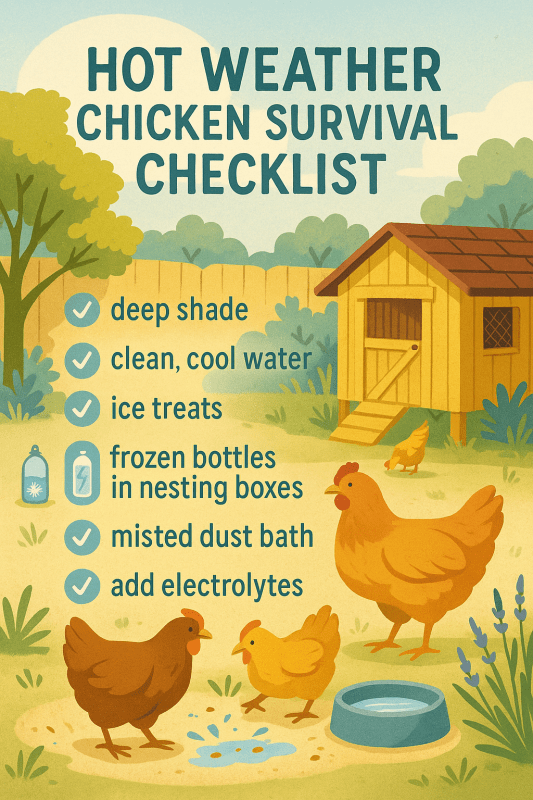The Age Milestones: Understanding the Stages of Chicken Development
The Age Milestones: Understanding the Stages of Chicken Development
As a chicken owner or enthusiast, it's important to understand the various stages of chicken development, particularly when it comes to egg-laying. Chickens, like most animals, go through different milestones as they grow and mature. These stages play a crucial role in determining when chickens start laying eggs. Here's a breakdown of the age milestones and what you can expect during each stage:
Brooding Stage (Day 1 - 6 weeks)
During the brooding stage, which lasts from the day chicks hatch until they reach around 6 weeks of age, the focus is primarily on keeping the chicks warm, safe, and well-nourished. They are highly dependent on their mother or a heat source for warmth during this stage. At this point, egg-laying is still a long way off as their bodies are not yet fully developed.
Growing Stage (6 weeks - 18 weeks)
Once the brooding stage ends, chickens enter the growing stage. During this period, typically spanning from 6 to 18 weeks, the young birds experience rapid growth and physical development. Feathers begin to replace fluffy down, and they become more independent and start exploring their surroundings. However, they are still not sexually mature enough to lay eggs.
Point of Lay Stage (18 - 24 weeks)
At around 18 to 24 weeks of age, chickens reach the point of lay stage, also known as sexual maturity. This is the phase where hens start to develop the ability to lay eggs. Signs of sexual maturity include physical changes such as comb and wattles growth and a change in behavior, such as increased vocalization and territorial behavior. However, it's important to note that not all chickens will begin laying eggs at this exact age – individual factors, breed, and environmental conditions can influence the specific timing.
Egg Production Stage (24+ weeks)
Once the point of lay stage is reached, hens will gradually begin laying eggs. Initially, the egg size may be smaller, but it will increase in size over time. The frequency of egg-laying can vary between breeds and individuals, but on average, most chickens will lay one egg per day or every other day. Factors such as diet, lighting conditions, and overall health can also impact egg production.
Conclusion
Understanding the different stages of chicken development and how they relate to egg-laying is crucial for any chicken owner. By recognizing the brooding, growing, point of lay, and egg production stages, you can better anticipate when your chickens will start laying eggs and ensure they receive the appropriate care and support throughout their development.
Factors Influencing Egg Production: Genetics, Breed, and Environmental Conditions
When it comes to understanding when chickens start laying eggs, several factors come into play. The most significant influences are genetics, breed characteristics, and environmental conditions. Let's delve deeper into each of these factors:
1. Genetics
Genetics play a vital role in determining when a chicken will begin laying eggs. Every chicken has a predetermined genetic blueprint that influences their growth rate, maturity, and egg production timeline. The genetics of a chicken dictate the internal clock that governs their reproductive development, including the age at which they reach sexual maturity and start producing eggs.
Some breeds are naturally late bloomers and may not start laying until they are around 7 to 8 months old. Others mature earlier and may begin to lay as early as 4 to 5 months old. It's essential to research the breed of your chickens to have realistic expectations about when they will start laying eggs.
2. Breed Characteristics
Aside from genetics, the breed of a chicken also influences when they will start laying eggs. Different breeds have unique characteristics that determine their rate of maturity and egg production. Some breeds are known for being early layers, meaning they begin producing eggs at a relatively young age.
For instance, breeds like Leghorns, Australorps, and Rhode Island Reds are celebrated for their early maturity and early egg production. On the other hand, heritage breeds such as Orpingtons or Brahmas might take longer to reach sexual maturity and start laying eggs.
It's important to note that not all chickens within a particular breed will follow the same schedule. Just like humans, each chicken is an individual and may slightly deviate from the average timeline. However, breed characteristics provide a rough estimate of when you can expect your chickens to start producing eggs.
3. Environmental Conditions
The environment in which the chickens are raised significantly impacts their egg-laying timeframe. Factors such as climate, temperature, lighting conditions, and nutrition can either accelerate or delay the onset of egg production.
Chickens are particularly sensitive to lighting conditions. The amount of daylight they receive greatly influences their reproductive hormones and egg-laying cycle. As the days get longer, chickens tend to lay more eggs. Conversely, during shorter daylight periods in winter, their egg production may decrease or cease entirely.
Nutrition is another crucial factor. A balanced diet that provides the necessary ingredients for egg production, such as sufficient protein and calcium, can promote earlier egg-laying. On the other hand, a poor diet lacking essential nutrients can delay the onset of egg production.
Additionally, stress, overcrowding, and health issues can also affect a chicken's egg-laying tendencies. Ensuring a comfortable and stress-free environment for your birds is vital for optimal egg production.
In conclusion, multiple factors come into play when determining when chickens will start laying eggs. Genetics, breed characteristics, and environmental conditions are all significant influences that dictate the onset of egg production. Understanding these factors allows poultry keepers to have realistic expectations and provide the necessary environment and care to promote healthy and timely egg-laying in their flock.
Signs of Laying: Identifying the Behavioral and Physical Cues
For chicken keepers, one of the most exciting milestones in a chicken's life is the moment they start laying eggs. Whether you're a beginner or an experienced chicken owner, being able to identify the signs of laying can help you prepare for the arrival of fresh, homegrown eggs. Here are some behavioral and physical cues that indicate your chickens are ready to start their egg-laying journey.
1. Squatting
As chickens mature and approach their laying stage, you may notice them squatting or crouching when approached by humans or other chickens. This squatting behavior is an instinctual response, indicating that they are getting ready to lay eggs. When you see your hens squatting, it's a good indication that eggs will soon be on their way!
2. Nesting Behavior
Another evident sign that your chickens are about to start laying is their sudden interest in establishing nests. You may notice them repeatedly visiting certain areas of the coop, scratching the bedding, and even rearranging materials to create a cozy spot for themselves. This nesting behavior is a clear indication that they are preparing to lay eggs and are searching for a suitable spot.
3. Comb and Wattle Development
One of the physical changes you can observe in your hens as they approach their egg-laying phase is the development of their comb and wattles. These fleshy, red parts located on top of their heads and beneath their chins, respectively, become brighter and larger in size. Observing these changes provides a clue that your chickens are reaching maturity and will soon start laying eggs.
4. Increased Vocalization
As chickens near their egg-laying age, they may become more vocal than usual. You might notice them clucking or making soft, purring sounds. This increase in vocalization is believed to be their way of communicating their readiness to lay eggs. If you start hearing more chatter from your hens, it's a good sign that egg-laying is just around the corner.
5. Physical Indicators
Aside from comb and wattle development, there are a few other physical cues that can help you determine whether your hens are ready to lay eggs. Look out for a reddening of their vent, which is the external opening of the cloaca used for egg-laying, mating, and waste elimination. Additionally, the pelvic bones located on either side of the vent will develop a wider gap as the hens mature to accommodate passing eggs.
By attentively observing these behavioral and physical cues, you can confidently anticipate when your hens will start laying eggs. This exciting time marks a significant milestone in your chickens' lives and opens up a world of delicious, homegrown eggs for you to enjoy!


